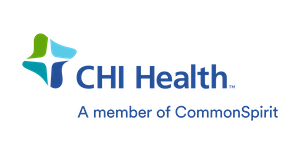At CHI Health the goal is to keep you as comfortable as possible and make the birthing experience a memorable one. So go ahead and bring some of your favorite things from home – a special lotion and comfy pillow. You and your physician will discuss your pain management options long before you check into the hospital. It’s good to have a pain management plan but know things can change and the plan in the delivery room will always put the health of baby and mom first.
Non-medical options include:
- Birthing balls
- Music
- Aromatherapy
- Massage
- Breathing techniques
Your nurses will help you with different options based on your wishes.
Your pharmaceutical options include
- Relaxation medications
- Nitrous oxide (available at select Maternity Centers - read more below)
- An epidural
If you choose an epidural, CHI Health has an anesthesiologist available 24 hours a day 7 days a week.
Pain management doesn’t end after delivery. Most women will experience discomfort. Your health care team will do its best to make you comfortable so you can concentrate on what’s important – bonding with your baby. You will want to include your pain management wishes as part of your birth plan. However, because your pain management needs are impossible to predict, especially if you are a first time mom, we will support you in whatever option you choose.
What is nitrous oxide?
Nitrous oxide is a gas used to decrease pain sensations. It’s colorless, odorless, and tasteless, and is inhaled through a mask.
The use of nitrous oxide was fairly common in the United States, but fell out of favor as epidurals became more popular in the 1980s. It has been widely used in the United Kingdom, Australia and Europe and has only recently become more available in the United States.
What are the benefits?
- Takes the edge off labor pains and reduces anxiety for many women.
- Begins working right away (within 30-60 seconds) and wears off quickly without lingering side effects.
- Gives you control of how much and when you inhale need it.
- Allows you to get out of bed or in the tub (have someone with you in case of lightheadedness or drowsiness).
What are the drawbacks?
- Does not completely numb any part of your body like an epidural will.
- Causes nausea in some women.
- Not recommended for those with past gastric bypass surgery, severe vitamin B12 deficiency, collapsed lungs or those unable to hold the mask due to musculoskeletal disease.
Is Nitrous Oxide safe for my baby?
Yes, nitrous oxide has been used by laboring women for decades. Women clear the nitrous oxide from their bodies through their lungs in about five minutes. Nitrous oxide that passes through the placenta to the baby is also cleared by the mother’s lungs. Dental offices use nitrous oxide for pain control in a higher concentration than is used for labor and delivery.

